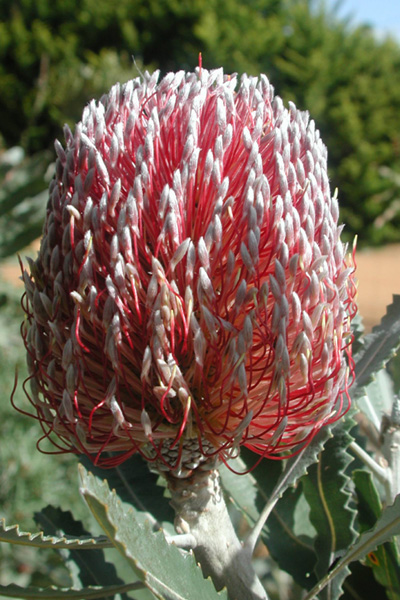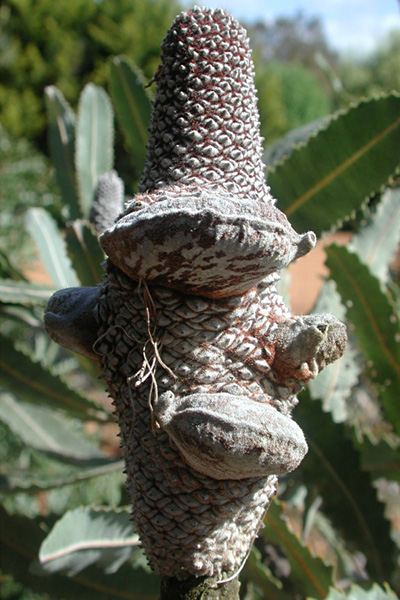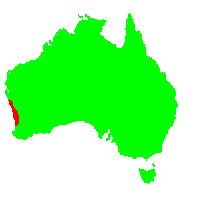General Description:
Banksia menziesii is a tree to about 10 metres in height. The leaves are oblong in shape, about 75-250 mm long by 10-40 mm wide with toothed margins. The flower spikes are conspicuous as they occur at the end of the branches (terminal). They have a distinct “acorn shape” as the flowers open and are orange-red in colour (rarely yellow) and up to 120 mm long by 80 mm diameter. Flowering is usually during autumn and winter. The seeds are enclosed in follicles attached to a woody cone and are generally retained within the cone until burnt.
This species develops a lignotuber and can regenerate by vegetative means from the lignotuber if the upper parts of the plant are destroyed by fire. It can also regenerate from seed.
B.menziesii is an outstanding ornamental species and useful for cut flower production due to its bright coloured, terminal flowers. It is suited to cultivation in areas with a dry summer climate but is difficult to maintain in areas of high summer humidity. It requires well drained soils in full sun to light shade and tolerates at least moderate frost. Like all banksias, it is excellent for attracting honey eating birds. A dwarf form is in cultivation.
Propagation from seed is reliable without pre-treatment and cuttings also succeed but may be slow to strike and success rate may be well below 100%.

Flower spike of Banksia menziesii
Photo: Gwyn Clarke

Seed cone of Banksia menziesii
Photo: Gwyn Clarke
 Australian Native Plants Society (Australia)
Australian Native Plants Society (Australia)